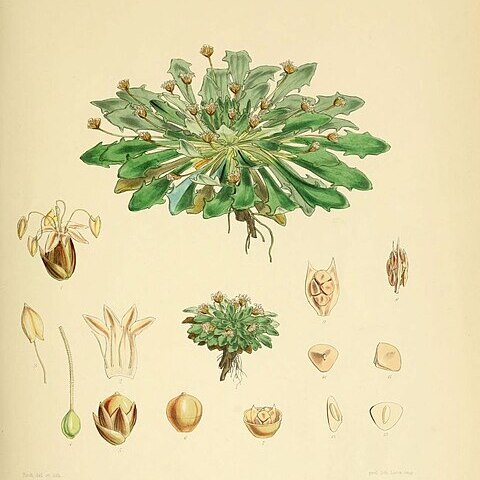Primary root developing into a long stout taproot. Stem short, unbranched, without adventitious roots, and almost without long fine hairs. Lvs almost fleshy, rosulate, (1)-3-4-(8) cm. × 5-15 mm., lamina spathulate or oblanceolate, tapering gradually into long petiole; tip obtuse, margin sts entire but us. with a few large teeth or auricle-like lobes; lf-hairs short, few-celled, tapering to sharp point, confined to upper side of lf, glab. and hairy lvs sts occurring on same plant; midrib only obvious vein. Scapes us. ═ or > lvs, hairs sparse and spreading or sts dense immediately below spike. Spike 1-4-(7)-fld, fls often shortly pedicellate. Bracts 2-4 mm. long, largest at base of spike, ovate-acuminate, concave, incurved at tip and minutely apiculate, keel broad and indistinct, occ. with a few cilia; sepals c. 3 mm. long, resembling bracts. Corolla-tube short, lobes ovate, c. 1·5 × 1 mm.; anthers c. 1 mm. long, short-tipped; ovules (5)-8-12-(14); capsule c. 3 mm. long, seeds irregularly angular.

